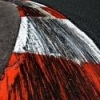I like racing and if I like something I want to know everything possible about the thing. Now I'm interested in AAA National championships. There is no other place on the web to get the stats as Phil's great work on motorsport.com, is there?
But there are a lot of gaps. Maybe we can discuss and fill the gaps in this forum, if somebody is interested?
Let's start with 1909 National championship.
As I know, the AAA Contest Board in 1926 revised the results and named Bert Dingley the champion using the points system from 1920-1929. In ~1950 Russ Catlin listed the 1902-1908 champs and changed 1909 champ to George Robertson. In most of the web resources (I haven't got another ones): motorsport.com, rumbledrome etc. 1909 champ is Robertson. Whatr really did Russ change? The points system? The races counting for championship? I bet for the latter. So wich were the races counting for championship that made Dingley the winner?
Now another problems related to race results in motorsport.com. I'm really not competent about the cars that the drivers drove in each race, but I want to know how the point system worked and why sometimes flagged (or even retired) drivers got points and sometimes they didn't. Why sometimes drivers that were classified in both of concurrently running races got points for positions in both races, why sometimes only the highest possible points from that event
Jun 12 1909 Portland (ch190901, ch190902)
1)It seems like both races run concurrently as Dingley's time is the same. How could he be classified in both
2)I would better like to list <$3000 race Round 1 and <$1600 race round two becouse Charlie Arnold finished the 3 laps sooner as Howard Covey but it isn't so important
3)Why only each winner got points and no points for Dingley and Christopherson who also finished the race?
Jun 12 1909 Portland (ch190903)
1)What means: Car name: Studebaker; Chassis&Engine: Buick. As so as CN: White; C&E: Pope-Hartford.
2)Why are only those 3 drivers who finished all 7 laps awarded with points? In some other races flagged drivers got points too.
Jun 18-19 1909 Crown Point (ch190904, ch190915)
Again: why no points for flagged drivers?
Jul 5 1909 Denver (ch190906)
Something completely not understandable. There must be a mistake.
The question is: did Martin Fletcher and E. Noyes got points considering they were flagged? I think Joe Matson and Morris Martin didn't.
Did relief drivers got points in those backwards reviewed races? For most of them, especially Indy 500 there are no info wich laps were completed by the starter and wich by relief. That makes the point sharing impossible. But what if the laps are known? As I understand points were given only for starters.
Jul 10 1909 Santa Monica (ch190907, ch190908)
Again: flagged drivers
Aug 19-21 1909 Indianapolis (ch190909, ch190910, ch 190911)
Here flagged drivers and even some DNFers (who completed almoust full distance) are awarded with points. Again a problem: Bruce Keene completes 80 laps, crashes but gets points. Bert Miller and Charles Merz complete as much laps as Barney Oldfield annd Tobin DeHymel but get nothing.
Sep 8 1909 Lowell (ch190912-15)
1) 3 races run concurrently. I would list those with lesser distance sooner rounds instead of what Harms did.
2)Again problems with points. In 300 mile race top 10 is awarded with points. In 451-600cu in race 7 drivers finish in the lead lap but only 5 first times are known. Why no points for those two with no time but lead lap and why no points for flagged?
Sep 29 1909 Riverhead (ch 190916-20)
Here flagged drivers get points. But why points for Dooley (out) and Reiss (withdrawn) in class E race? There must be a mistake.
Oct 9 1909 Philadelphia (ch190921)
Again - no points for flagged drivers
Round 22 and 23 are mixed I think.
Oct 24 1909 San Francisco (ch190923)
~250 mile race
Race notes:
Average speeds computed on basis of total distance of 445.26 miles;
Points allocated on basis of advertised total distance of 450 miles;
Goode disqualified for carrying fuel away from pits.
The race was 250 miler. So the winner should've get 500 points. Harms gives him 600. But for 450 mile race there should be either 800 or 1000 (I don't think 900 points for 450 miles existed in 1920-1929 system).
Ohh, I found it: those 3 notes are from Aug 9 1913 San Francisco race (ch191311). I think they shouldn't have arrive here. And Frank Goode didn't took part in this race.
So: why Harms gives Fleming 600 not 500 points and again: why nothing for flagged Bonney?
Oct 30 1909 Long Island (Vanderbilt Cup) (ch190922)
It seems like Harms has given points for each driver that completed at least half distance of the race even if they didn't finish
Nov 6 1909 LA-Phoenix (ch190924)
If I believe rumbledrome.com, the distance was 800 miles. So I think there were no more than 1000 points available for one race.
This wasn't a cirquit race. How did Harms (or AAA Contest Board) decide that Joe Nikrent and not Louis Nikrent is the winner and gets all points? The same for other 3 finishers.
Of course, Phil Harms has seen a lot more documental evidence about early AAA races and championships. But these are the indeterminations that cause a lot of questions: how? why so and no otherwise?
Now my main conclusion about the indeterminations. AAA points were awarded counting only the race results as the promoter of the race describes them in protocols. If the promoter accounts only lead lap finishes as finished races then only lead lap finishers get ponts. If there is enough to make a half distance to be classified by the promoter, even crashed drivers get AAA points. I don't see any other explanation.
Thank you very much if somebody read




















